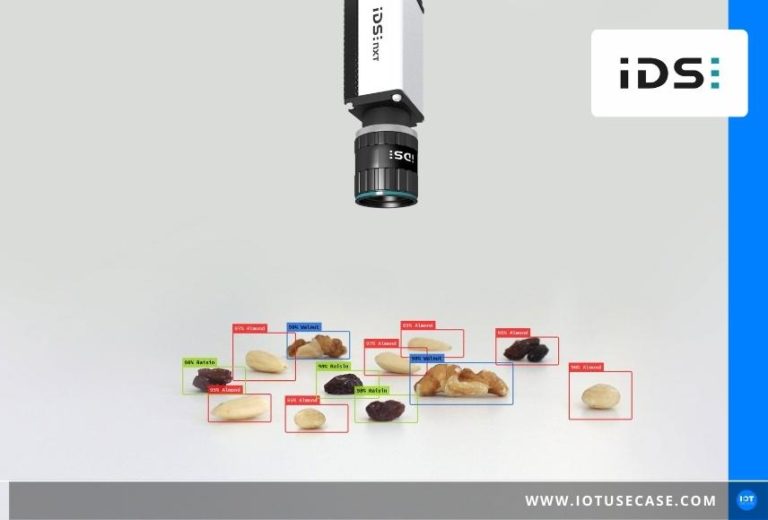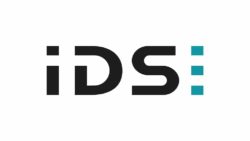The food sector is characterized by a low automation rate combined with high cost pressure in production. An innovative manufacturer of industrial cameras addresses the problem in this use case and optimizes quality assurance in the packing of nuts. A solution that can easily be implemented in-house, reduces manual effort and is transferable to many other applications.
Problem: Nuts are not screws
Have you ever wondered who or what makes it possible for there to be a fair ratio in a nut mix? And how it can be that in it all walnuts have a similar size, show hardly any differences in quality and above all: no rotten nut has snuck in between? Well, you are holding in your hands the result of a meticulous quality assurance process that is now increasingly automatic.
Such tests are difficult for conventional sorting and monitoring systems because nuts are not screws. In a screw production, almost identical objects are created, a deviation is an indication of a defect – for example, an incorrectly pressed screw head. However, organic products such as nuts sometimes differ greatly in shape and also color. “Variant organic objects” is what IDS calls them; they can be examined using the IDS NXT camera. Specifically, in this case, it should find out whether, for example, really 10% walnuts (variety 1) or 25% almonds (variety 2) are in the bag.
Solution: Customer feeds the camera with images and thus trains the neural network
In detail, it works like this: The customer takes about 50 images of each nut type (object class) in different shapes and positions with the IDS NXT. This evaluates whether the AI is up to the task, with the probability of success increasing the more different the selected positions and sizes of the nuts are. Also, the number should differ: in one picture only one nut, in the next maybe three. Finally, the camera requires details about defective nuts from a product expert; this process is called “labeling.” The customer then submits the images to the cloud using the Vision app to train the camera AI with their labeled images. With 50 images, a recognition rate of 100% is already very close. The chance is increased by the software assisting with a recommended post-processing: The images can be made brighter or darker or realigned. Most importantly, users do not need any AI expertise; their product knowledge alone is enough to train the AI together with the software.
Due to the high cost pressure in the food industry, IDS also offers a partially automated solution that already greatly improves quality. However, those who long for a fully automated solution will find it just as well. The key technology is the OPC UA (Open Platform Communications Unified Architecture) industrial protocol, which allows the camera to communicate with devices, machines and services without an intermediate PC. Manufacturer-independent, scalable and with high security; ideal for the needs of Industry 4.0. It works via web protocols in any TCP/IP network and can connect the whole factory. Uniform communication takes place across all physical layers and Ethernet-based fieldbuses, all the way to the cloud. Available device services, such as image processing tasks in this case, are encapsulated by OPC UA in function blocks, so-called “recipes”. Users do not need to understand the way it works, nor do they need to understand the in-depth settings of specific applications. These are summarized in configuration data sets, so-called “presets”. And yet the camera can also be written to independently if desired, keeping all options open.
The result: Significant savings potential thanks to fewer complaints
Finally, the desired evaluations are displayed in a dashboard. In this way, users have a permanent overview of what is to be measured, such as in this case the error rate in nut sorting. The IDS NXT camera offers a complete solution with easy handling. The following advantages result:
- No external expertise required – solutions can be implemented in-house.
- Significant savings potential that quickly amortizes the acquisition costs.
- Fast, autonomous training of the neural network can be beneficial for rapid prototyping and create a competitive advantage: faster product launch.
- Less manual effort: no pre-sorting, counting, measuring, weighing, etc.
- Nevertheless: An additional visual inspection would be possible, if desired.
- Convenient documentation of images and evaluations.
As far as monotonous tasks are concerned, AI works more error-free and sustainable than humans. The IDS NXT can not only sort nuts, but can be used in a variety of ways. Maybe a chocolate marshmallow manufacturer wants to check his uniform dessert for dents and cracks? No problem! And where does all this leave the human being? Is he becoming expendable? No, because he can now devote himself to more “intelligent” tasks.





